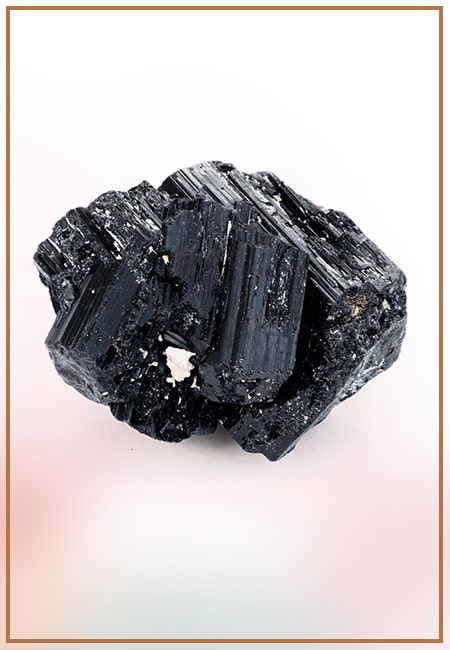- Written By Team DWS
- Festivals
- January 02, 2025
What to Know About Human Trafficking Awareness Day?
Every year, January 11th is observed as National Human Trafficking Awareness Day in the United States, a day dedicated to raising awareness about a grave violation of human rights that affects millions of individuals across the globe. Although this day seems to pass under the radar for many, it carries profound significance in shining a light on an issue that is often overlooked. This blog post will delve into what Human Trafficking Awareness Day is, the importance of raising awareness, the forms of human trafficking, and actionable steps you can take to support this cause.
Understanding Human Trafficking
Human trafficking is a form of modern slavery, involving the illegal trade of people for exploitative purposes, including forced labor, sexual exploitation, and involuntary servitude. Victims are often manipulated or coerced through deception, force, or abuse of power. It’s a multi-billion-dollar industry that operates in both the developed and developing world, and it is a complex issue that requires comprehensive understanding and action.
Globally, it is estimated that around 40 million individuals are trapped in human trafficking situations, with millions more at risk. The reality is staggering: trafficking affects men, women, and children of every age, ethnicity, and socioeconomic background.
-dws638713861730815538.jpg)
The Significance of Human Trafficking Awareness Day
Human Trafficking Awareness Day serves as a platform to educate the public about the signs and consequences of trafficking. The day underlines the necessity of understanding this issue so that we can better protect vulnerable populations, advocate for policy changes, and support survivors.
- Education and Awareness: Awareness is the first step toward prevention. Many individuals are unaware of the signs of trafficking, which can manifest in various ways. By raising awareness, we can empower more people to recognize and report suspected trafficking situations.
- Engagement: This day provides an opportunity for community leaders, activists, and everyday citizens to engage in conversations about human trafficking. Through workshops, social media campaigns, and community outreach programs, we can spread information and foster support for anti-trafficking initiatives.
- Advocacy: Awareness Day encourages advocacy for stronger policies and regulations that protect potential victims and hold traffickers accountable. It galvanizes individuals to demand governmental and organizational action against trafficking and to support legislation aimed at combatting this pressing issue.
- Support for Survivors: A key component of awareness and advocacy is recognizing the needs of survivors of human trafficking. By drawing attention to their plight, Human Trafficking Awareness Day promotes resources, counseling, and rehabilitation programs to aid in their recovery.
Forms of Human Trafficking
Human trafficking takes on various forms, each with its unique set of challenges and complexities. Understanding these forms is crucial for recognizing and addressing them effectively.
- Sex Trafficking: This involves the coercion or manipulation of individuals into engaging in commercial sex acts. Often, women and children are the primary targets, but men can also be victims.
- Labor Trafficking: Involves forcing individuals to work under threat or coercion, often in unsafe or exploitative conditions. This can occur in industries such as agriculture, construction, and domestic work.
- Child Trafficking: Children are particularly vulnerable to trafficking for labor, sexual exploitation, or even recruitment into armed conflict. The abuse of children by adults often goes unnoticed, making it imperative to educate communities on identifying and addressing this issue.
- Organ Trafficking: While less discussed, the trafficking of organs is a tragic reality where individuals are exploited for the illicit sale of their organs.
Taking Action
So, how can you contribute on Human Trafficking Awareness Day and beyond? Here are some actionable steps:
- Educate Yourself: Learning about the issue is fundamental. Attend workshops, read literature, and follow credible organizations that work to combat human trafficking.
- Spread the Word: Use your platforms—social media, community boards, and conversations—to raise awareness. Share information, statistics, and resources to educate those around you.
- Volunteer or Donate: Many organizations dedicated to combating human trafficking rely on community support. Consider volunteering your time, services, or resources to those organizations involved in prevention, advocacy, and rehabilitation of survivors.
- Report Suspicious Activity: If you come across a situation that seems suspicious or indicative of trafficking, do not hesitate to report it to the authorities.
- Advocate for Change: Join advocacy groups that work for policy reform, and use your voice to lobby for stronger anti-trafficking laws.
Conclusion
On National Human Trafficking Awareness Day, let us take the time to inform ourselves about this critical issue and embrace our capacity to foster change. Awareness is not merely about acknowledging the problem; it is a call to action. By engaging our communities to recognize, understand, and combat human trafficking, we empower individuals to become advocates for those affected and work towards systemic solutions. Together, we can create a unified front against this violation of human rights and help pave the way for safer, more informed societies. Let us commit to supporting survivors, educating ourselves and others, and holding accountable those who perpetrate these heinous crimes. Change begins with awareness, and our collective efforts can turn awareness into action for a brighter, more just future.
-dws638713861254697333.jpg)
Human Trafficking Awareness Day: Frequently Asked Questions (FAQs)
1. What is Human Trafficking Awareness Day?
Human Trafficking Awareness Day is observed annually to raise awareness about the issue of human trafficking and to educate the public about its causes, effects, and prevention. It emphasizes the need for collective action to combat trafficking in all its forms.
2. When is Human Trafficking Awareness Day observed?
Human Trafficking Awareness Day is observed on January 11th each year in the United States. The day is part of a broader awareness campaign that often coincides with National Slavery and Human Trafficking Prevention Month in January.
3. Why is it important to recognize Human Trafficking Awareness Day?
Recognizing this day is crucial for raising awareness of the prevalence of human trafficking, understanding its complexities, and highlighting the importance of prevention efforts. It serves as a reminder that human trafficking can happen anywhere and affects individuals regardless of age, gender, or nationality.
4. What forms of human trafficking exist?
Human trafficking can take many forms, including:
- Sex Trafficking: Entails the manipulation or coercion of individuals into engaging in commercial sex acts, often through deception, violence, or threats.
- Labor Trafficking: Involves the exploitation of individuals through forced labor, often in industries such as agriculture, construction, and domestic work.
- Child Trafficking: Involves the recruitment or use of children for exploitative purposes, including sexual exploitation and forced labor.
5. How can I get involved on Human Trafficking Awareness Day?
You can get involved by:
- Educating yourself and others about human trafficking.
- Participating in or organizing awareness events, workshops, and discussions.
- Supporting local organizations that combat human trafficking through donations or volunteer work.
- Advocating for policies that protect victims and enhance prevention efforts.
6. What are some signs of human trafficking to look out for?
Signs of human trafficking may include:
- Individuals who appear malnourished or show signs of physical abuse.
- Those who are frequently monitored by others or unable to speak for themselves.
- Individuals who lack personal identification or appear disoriented and fearful.
- Those who work excessively long hours under poor conditions with little or no pay.
7. How can I report suspected human trafficking?
If you suspect human trafficking, it is essential to report it to the appropriate authorities. You can contact local law enforcement, or the National Human Trafficking Hotline at 1-888-373-7888. They provide confidential support and resources.
8. Are there resources available for victims of human trafficking?
Yes, numerous organizations offer resources and support for victims, including hotlines, shelters, counseling services, and legal assistance. For U.S. residents, the National Human Trafficking Hotline is a valuable resource, providing 24/7 assistance.
9. How does human trafficking relate to broader social issues?
Human trafficking is deeply intertwined with issues such as poverty, lack of education, gender inequality, and systemic discrimination. Addressing these root causes is vital for effective prevention and intervention strategies.
10. What can I do year-round to help combat human trafficking?
To help combat human trafficking beyond Human Trafficking Awareness Day, you can:
- Continue to educate yourself and raise awareness in your community.
- Support fair trade and ethical businesses.
- Advocate for policy changes at local, state, and national levels.
- Donate to or volunteer with organizations working against human trafficking.
By staying informed and involved, we can all contribute to the fight against human trafficking and support those affected by this crime.
Popular on Blogs

Black Tourmaline: Meaning, Healing Properties, Fascinating Facts, Powerful Attributes, Versatile Uses, and Beyond
September 05, 2023 / BY Team DWS
Black Tourmaline, also known as Schorl, is a highly revered crystal with incredible metaphysical properties. It derives its name from the Dutch word "turamali," meaning "stone with ..

Carnelian Stone: Meaning, Healing Properties, Power, Facts, Color, Uses and More
December 26, 2023 / BY Team DWS
Carnelian is a vibrant and captivating gemstone that holds a plethora of meanings, healing properties, and powers. Its warm and fiery energy makes it a popular choice among crystal ..

Citrine: Exploring its Meaning, Healing Properties, Fascinating Facts, Powers, Versatile Uses, and Much More
November 18, 2023 / BY Team DWS
Citrine, with its warm golden hues, has captured the attention and imagination of people for centuries. This beautiful gemstone, commonly associated with wealth and prosperity, hol ..

Black Onyx: Unveiling the Meaning, Healing Properties, Fascinating Facts, Powerful Attributes, Versatile Uses, and Beyond
July 25, 2023 / BY Team DWS
Black Onyx, a striking gemstone admired for its deep black hue and elegant appearance, has captivated people for centuries. In this comprehensive guide, we will delve into the mean ..

Unveiling the Mysteries of Turquoise Stone: Exploring its Meaning, Healing Properties, Power, Facts, Color, Uses, and More
December 05, 2023 / BY Team DWS
Turquoise, with its captivating blue-green hue, has been adorning jewelry and artifacts for centuries. This striking stone has a rich history, rich symbolism, and a plethora of int ..

The History Behind The Popularity of Red Agate
December 23, 2022 / BY Team DWS
An Agate is a type of magma rock that takes many years till it is washed out naturally into the water. And that is the reason this stone has elements of water. This beautiful stone ..

Bloodstone: Unveiling the Meaning, Healing Properties, Facts, Powers, Uses, and More
August 21, 2023 / BY Team DWS
Bloodstone, with its captivating deep green color with specks of red, is a mesmerizing gemstone that has fascinated civilizations for centuries. It possesses unique healing propert ..

Plan a Perfect Valentine's Week with Our Valentine Week List 2025
January 22, 2024 / BY Team DWS
Valentine's Day is undoubtedly the most romantic day of the year, but we believe that one day is just not enough to express your love and make your partner feel special. That's why ..


